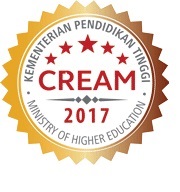Special Issue Publication
2023-05-15
Malaysian Journal of Computer Science (MJCS) is not accepting any proposal for Special Issue, until further notice.
The Malaysian Journal of Computer Science (ISSN 0127-9084) is published four times a year in January, April, July and October by the Faculty of Computer Science and Information Technology, University of Malaya, since 1985. Over the years, the journal has gained popularity and the number of paper submissions has increased steadily. The rigorous reviews from the referees have helped in ensuring that the high standard of the journal is maintained.
The objectives are to promote exchange of information and knowledge in research work, new inventions/developments of Computer Science and on the use of Information Technology towards the structuring of an information-rich society and to assist the academic staff from local and foreign universities, business and industrial sectors, government departments and academic institutions on publishing research results and studies in Computer Science and Information Technology through a scholarly publication.
The journal is being indexed and abstracted by Clarivate Analytics' Web of Science (Q4 of Journal Citation Report Rank)
![]()
The journal is also abstracting in Elsevier's Scopus (Q3 of SCIMAGO Journal Rank)
![]()
The MJCS is a recipient of the CREAM (2017) and CREME Awards (2019) by the Ministry of Higher Education Malaysia.


2023-05-15
Malaysian Journal of Computer Science (MJCS) is not accepting any proposal for Special Issue, until further notice.